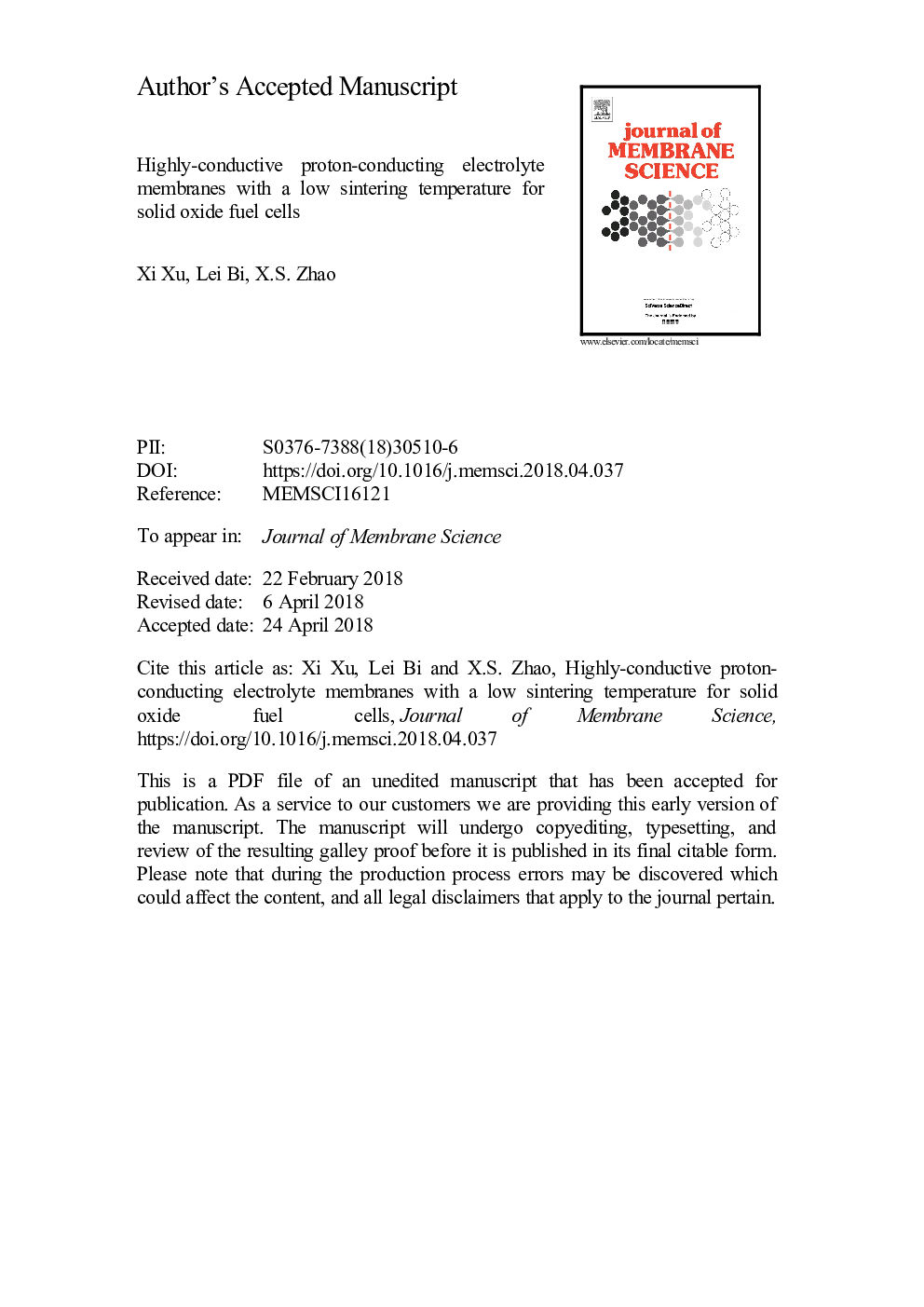| Article ID | Journal | Published Year | Pages | File Type |
|---|---|---|---|---|
| 7019822 | Journal of Membrane Science | 2018 | 34 Pages |
Abstract
The microwave sintering strategy was for the first time adopted to prepare proton-conducting electrolyte membranes for solid oxide fuel cells. The preparation of a dense proton-conducting BaCe0.7Zr0.1Y0.2O3-δ (BCZY) electrolyte membrane can be achieved at 1200â¯Â°C with the microwave sintering method. In sharp contrast, a BCZY sample prepared at 1200â¯Â°C using the conventional thermal sintering method was found to be porous. In comparison with a dense BCZY sample prepared at 1400â¯Â°C using the conventional sintering method, the microwave-sintered BCZY electrolyte showed an improved proton conductivity, which is beneficial for fuel cell applications. Experimental results showed that the microwave sintering method enabled a homogenous elemental distribution and a suppression of barium evaporation, leading to the conductivity improvement in both bulk and grain boundaries. With the microwave sintered BCZY film as the electrolyte, a proton-conducting solid oxide fuel cell delivered a maximum power density of 838â¯mWâ¯cmâ2 at 700â¯Â°C with an electrolyte film conductivity as high as 1.4â¯Ãâ¯10â2 Sâ¯cmâ1. This study suggests that the microwave sintering method is a promising strategy to prepare electrolyte membranes at a relatively low temperature with high conductivity, which could advance the development of proton-conducting solid oxide fuel cells.
Related Topics
Physical Sciences and Engineering
Chemical Engineering
Filtration and Separation
Authors
Xi Xu, Lei Bi, X.S. Zhao,
